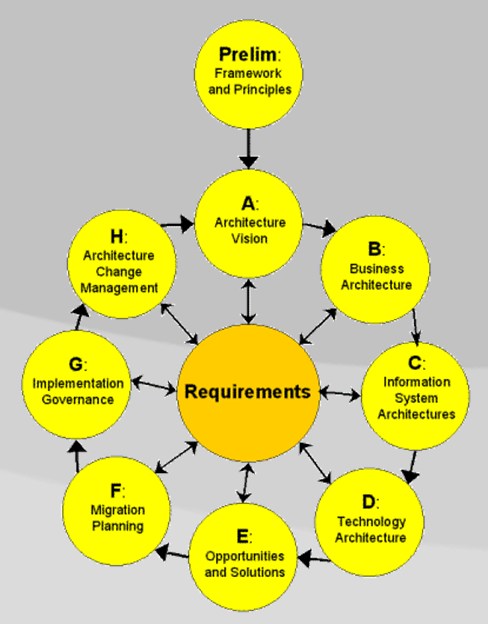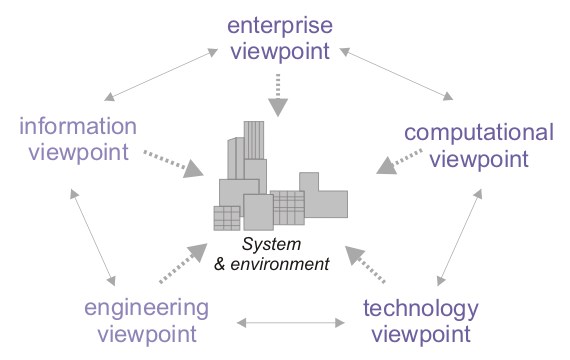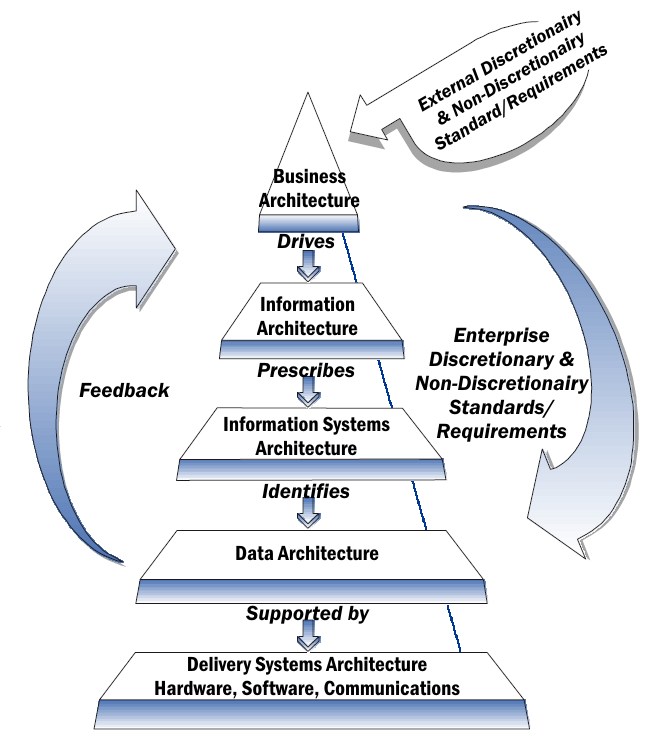|
Architecture Framework
The ISO/IEC/IEEE 42010 Conceptual Model of Architecture Description defines the term architecture framework within systems engineering and software development as: "An architecture framework establishes a common practice for creating, interpreting, analyzing and using architecture descriptions within a particular domain of application or stakeholder community. Examples of Architecture Frameworks: MODAF, TOGAF, Kruchten's 4+1 view model, RM-ODP." Especially the domain within a company or other organization is covered by enterprise architecture framework An enterprise architecture framework (EA framework) defines how to create and use an enterprise architecture. An architecture framework provides principles and practices for creating and using the architecture description of a system. It struct ...s. The Survey of Architecture Frameworks [...More Info...] [...Related Items...] OR: [Wikipedia] [Google] [Baidu] |
International Organization For Standardization
The International Organization for Standardization (ISO ) is an international standard development organization composed of representatives from the national standards organizations of member countries. Membership requirements are given in Article 3 of the ISO Statutes. ISO was founded on 23 February 1947, and (as of November 2022) it has published over 24,500 international standards covering almost all aspects of technology and manufacturing. It has 809 Technical committees and sub committees to take care of standards development. The organization develops and publishes standardization in all technical and nontechnical fields other than electrical and electronic engineering, which is handled by the IEC.Editors of Encyclopedia Britannica. 3 June 2021.International Organization for Standardization" ''Encyclopedia Britannica''. Retrieved 2022-04-26. It is headquartered in Geneva, Switzerland, and works in 167 countries . The three official languages of the ISO are English, Fren ... [...More Info...] [...Related Items...] OR: [Wikipedia] [Google] [Baidu] |
International Electrotechnical Commission
The International Electrotechnical Commission (IEC; in French: ''Commission électrotechnique internationale'') is an international standards organization that prepares and publishes international standards for all electrical, electronic and related technologies – collectively known as "electrotechnology". IEC standards cover a vast range of technologies from power generation, transmission and distribution to home appliances and office equipment, semiconductors, fibre optics, batteries, solar energy, nanotechnology and marine energy as well as many others. The IEC also manages four global conformity assessment systems that certify whether equipment, system or components conform to its international standards. All electrotechnologies are covered by IEC Standards, including energy production and distribution, electronics, magnetics and electromagnetics, electroacoustics, multimedia, telecommunication and medical technology, as well as associated general disciplines such as t ... [...More Info...] [...Related Items...] OR: [Wikipedia] [Google] [Baidu] |
Institute Of Electrical And Electronics Engineers
The Institute of Electrical and Electronics Engineers (IEEE) is a 501(c)(3) professional association for electronic engineering and electrical engineering (and associated disciplines) with its corporate office in New York City and its operations center in Piscataway, New Jersey. The mission of the IEEE is ''advancing technology for the benefit of humanity''. The IEEE was formed from the amalgamation of the American Institute of Electrical Engineers and the Institute of Radio Engineers in 1963. Due to its expansion of scope into so many related fields, it is simply referred to by the letters I-E-E-E (pronounced I-triple-E), except on legal business documents. , it is the world's largest association of technical professionals with more than 423,000 members in over 160 countries around the world. Its objectives are the educational and technical advancement of electrical and electronic engineering, telecommunications, computer engineering and similar disciplines. History Origins ... [...More Info...] [...Related Items...] OR: [Wikipedia] [Google] [Baidu] |
Systems Engineering
Systems engineering is an interdisciplinary field of engineering and engineering management that focuses on how to design, integrate, and manage complex systems over their enterprise life cycle, life cycles. At its core, systems engineering utilizes systems thinking principles to organize this body of knowledge. The individual outcome of such efforts, an engineered system, can be defined as a combination of components that work in synergy to collectively perform a useful Function (engineering), function. Issues such as requirements engineering, reliability, logistics, coordination of different teams, testing and evaluation, maintainability and many other Discipline (academia), disciplines necessary for successful system design, development, implementation, and ultimate decommission become more difficult when dealing with large or complex projects. Systems engineering deals with work-processes, optimization methods, and risk management tools in such projects. It overlaps technical ... [...More Info...] [...Related Items...] OR: [Wikipedia] [Google] [Baidu] |
Software Development
Software development is the process of conceiving, specifying, designing, programming, documenting, testing, and bug fixing involved in creating and maintaining applications, frameworks, or other software components. Software development involves writing and maintaining the source code, but in a broader sense, it includes all processes from the conception of the desired software through to the final manifestation of the software, typically in a planned and structured process. Software development also includes research, new development, prototyping, modification, reuse, re-engineering, maintenance, or any other activities that result in software products. Methodologies One system development methodology is not necessarily suitable for use by all projects. Each of the available methodologies are best suited to specific kinds of projects, based on various technical, organizational, project, and team considerations. Software development activities Identification of need The sou ... [...More Info...] [...Related Items...] OR: [Wikipedia] [Google] [Baidu] |
MODAF
The British Ministry of Defence Architecture Framework (MODAF) was an enterprise architecture framework, architecture framework which defined a standardised way of conducting enterprise architecture, originally developed by the British Ministry of Defence, UK Ministry of Defence. It has since been replaced with the NATO Architecture Framework. Initially the purpose of MODAF was to provide rigour and structure to support the definition and integration of MOD equipment capability, particularly in support of network-enabled capability (NEC). The MOD additionally used MODAF to underpin the use of the enterprise architecture approach to the capture of the information about the business to identify the processes and resources required to deliver the vision expressed in the strategy. Overview MODAF was an internationally recognised enterprise architecture framework developed by the Ministry of Defence (United Kingdom), MOD to support Defence planning and change management activitie ... [...More Info...] [...Related Items...] OR: [Wikipedia] [Google] [Baidu] |
TOGAF
The Open Group Architecture Framework (TOGAF) is the most used framework for enterprise architecture as of 2020 that provides an approach for designing, planning, implementing, and governing an enterprise information technology architecture. TOGAF is a high-level approach to design. It is typically modeled at four levels: Business, Application, Data, and Technology. It relies heavily on modularization, standardization, and already existing, proven technologies and products. TOGAF was developed starting 1995 by The Open Group, based on United States Department of Defense's TAFIM and Capgemini's Integrated Architecture Framework (IAF). As of 2016, The Open Group claims that TOGAF is employed by 80% of Global 50 companies and 60% of Fortune 500 companies. Overview An architecture framework is a set of tools which can be used for developing a broad range of different architectures. It should: * describe a method for defining an information system in terms of a set of building bl ... [...More Info...] [...Related Items...] OR: [Wikipedia] [Google] [Baidu] |
4+1 Architectural View Model
4+1 is a view model used for "describing the architecture of software-intensive systems, based on the use of multiple, concurrent views".Kruchten, Philippe (1995, November)Architectural Blueprints — The “4+1” View Model of Software Architecture.IEEE Software 12 (6), pp. 42-50. The views are used to describe the system from the viewpoint of different stakeholders, such as end-users, developers, system engineers, and project managers. The four views of the model are logical, development, process and physical view. In addition, selected use cases or scenarios are used to illustrate the architecture serving as the 'plus one' view. Hence, the model contains 4+1 views: * ''Logical view'': The logical view is concerned with the functionality that the system provides to end-users. UML diagrams are used to represent the logical view, and include class diagrams, and state diagrams.Mikko Kontio (2008, JulyArchitectural manifesto: Designing software architectures, Part 5/ref> * ''Proce ... [...More Info...] [...Related Items...] OR: [Wikipedia] [Google] [Baidu] |
RM-ODP
Reference Model of Open Distributed Processing (RM-ODP) is a reference model in computer science, which provides a co-ordinating framework for the standardization of open distributed processing (ODP). It supports distribution, interworking, platform and technology independence, and portability, together with an enterprise architecture framework for the specification of ODP systems. RM-ODP, also named ''ITU-T Rec. X.901-X.904'' and ''ISO/IEC 10746'', is a joint effort by the International Organization for Standardization (ISO), the International Electrotechnical Commission (IEC) and the Telecommunication Standardization Sector (ITU-T). Overview The RM-ODP is a reference model based on precise concepts derived from current distributed processing developments and, as far as possible, on the use of formal description techniques for specification of the architecture. Many RM-ODP concepts, possibly under different names, have been around for a long time and have been rigorousl ... [...More Info...] [...Related Items...] OR: [Wikipedia] [Google] [Baidu] |
Enterprise Architecture Framework
An enterprise architecture framework (EA framework) defines how to create and use an enterprise architecture. An architecture framework provides principles and practices for creating and using the architecture description of a system. It structures architects' thinking by dividing the architecture description into domains, layers, or views, and offers models - typically matrices and diagrams - for documenting each view. This allows for making systemic design decisions on all the components of the system and making long-term decisions around new design requirements, sustainability, and support. Overview Enterprise architecture regards the enterprise as a large and complex system or system of systems. To manage the scale and complexity of this system, an architectural framework provides tools and approaches that help architects abstract from the level of detail at which builders work, to bring enterprise design tasks into focus and produce valuable architecture description docu ... [...More Info...] [...Related Items...] OR: [Wikipedia] [Google] [Baidu] |
Software Architecture
Software architecture is the fundamental structure of a software system and the discipline of creating such structures and systems. Each structure comprises software elements, relations among them, and properties of both elements and relations. The ''architecture'' of a software system is a metaphor, analogous to the architecture of a building. It functions as a blueprint for the system and the developing project, which project management can later use to extrapolate the tasks necessary to be executed by the teams and people involved. Software architecture is about making fundamental structural choices that are costly to change once implemented. Software architecture choices include specific structural options from possibilities in the design of the software. For example, the systems that controlled the Space Shuttle launch vehicle had the requirement of being very fast and very reliable. Therefore, an appropriate real-time computing language would need to be chosen. Addition ... [...More Info...] [...Related Items...] OR: [Wikipedia] [Google] [Baidu] |






